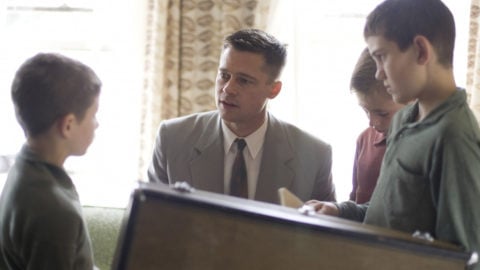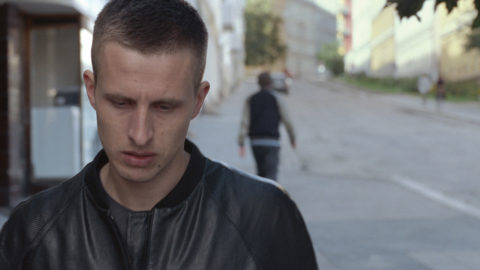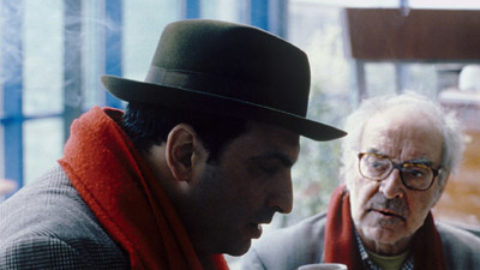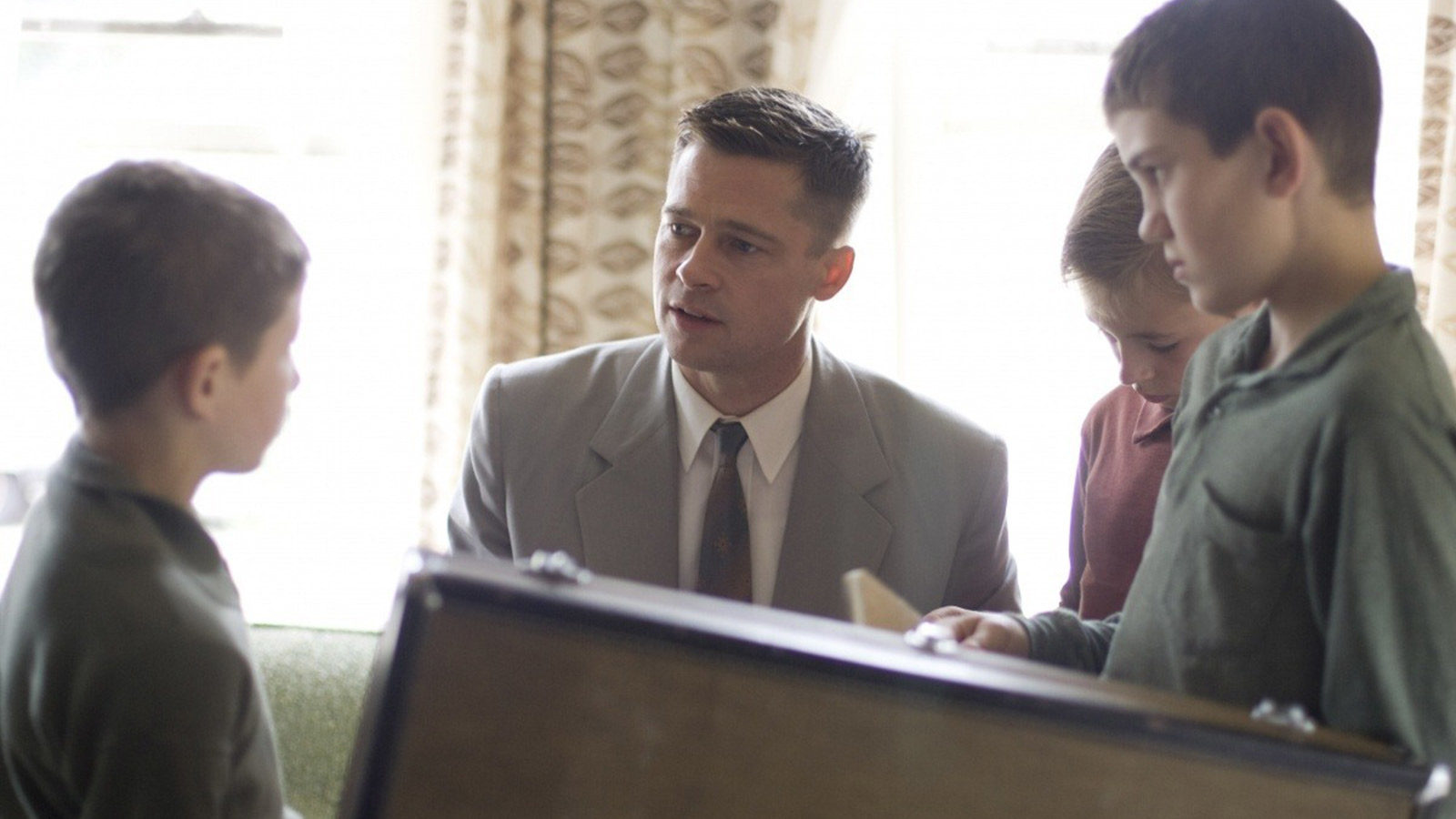
All Movies Great and Small
Cannes 2011 skewed toward grandiosity in entertainment (Pirates of the Caribbean: On Stranger Tides playing out of competition) and art (Terrence Malick’s The Tree of Life, which won the Palme d’Or). Both films had crowds camping out on the Croisette to catch a glimpse of their respective stars (Johnny Depp and Brad Pitt) and in that sense The Tree of Life was a somewhat rare multipurpose Competition entry. “Most of us felt it was the movie with the size, importance, intention, whatever you want to call it, that fit the prize,” said Jury president Robert De Niro, explaining how the jury arrived at the decision to award the Palme to Malick’s long-anticipated cinematic melding of the birth, evolution, and death of the planet with the childhood memories of one depressed middle-aged contemporary architect.
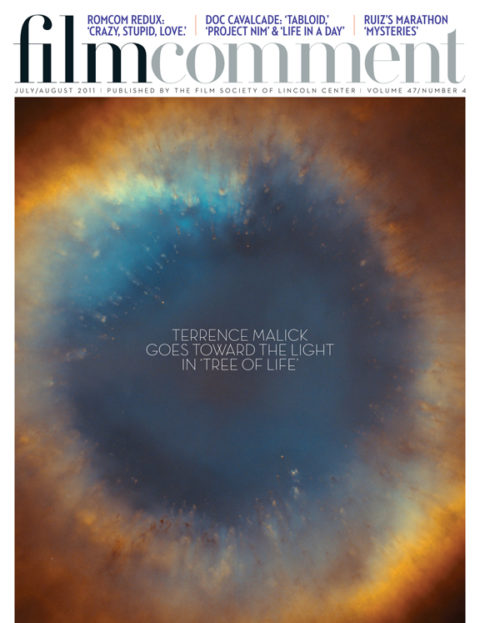
Some juries might have questioned the qualities De Niro mentioned—for example, the David Cronenberg–headed 1999 jury that rewarded the Dardenne Brothers’ Rosetta; the 2003 Patrice Chéreau jury that chose Gus Van Sant’s Elephant; the 2008 Sean Penn jury that went for Laurent Cantet’s The Class; and just last year, the Tim Burton jury that, to the joy of most cinephiles, selected Apichatpong Weerasethakul’s Uncle Boomee Who Can Recall His Past Lives. The last word one would employ to describe any of those movies or, indeed, the vast majority of Palme d’Or winners is “size.” But De Niro was correct in using it to describe The Tree of Life. The last similarly sized Palme winner by an American “auteur” that was years in the making and drew heavily on the technical resources of the Hollywood machine was Francis Ford Coppola’s Apocalypse Now, which arrived in Cannes in 1979 as “a work in progress.” The screening of the director’s cut, Apocalypse Now Redux, in the Lumière in 2002 ranks among my most amazing Cannes movie experiences. The Tree of Life in no way measured up.
There is no place better than Cannes to make one aware of the differences between oneself and colleagues with whom one is usually on the same page. The intense hostility with which my mixed-to-negative appraisal of The Tree of Life was met (one critic actually put his hand over my mouth) made me wonder exactly what was at stake here. To summarize: despite passages of glorious camera movement and cutting on movement in the “modern” nuclear family section, the film’s attempt to represent the presence of the Creator in all living things from the Big Bang to the End of Time relies on an aesthetically insufferable pile-on of maudlin voiceover combined with a glut of classical religious music. I don’t fault Malick’s beliefs, only how he shapes them as a motion picture. But given that The Tree of Life is an example of a nearly extinct life form—the Hollywood art film executed on a grand scale—even I resisted stomping it entirely to death, much as Malick’s big dinosaur spared the life of the little dinosaur in a memorably weird scene that was meant to show, I guess, that the Creator (Him again) intelligently designed evolution to be more complicated and compassionate than the survival of the fittest (unregulated capitalism notwithstanding)!
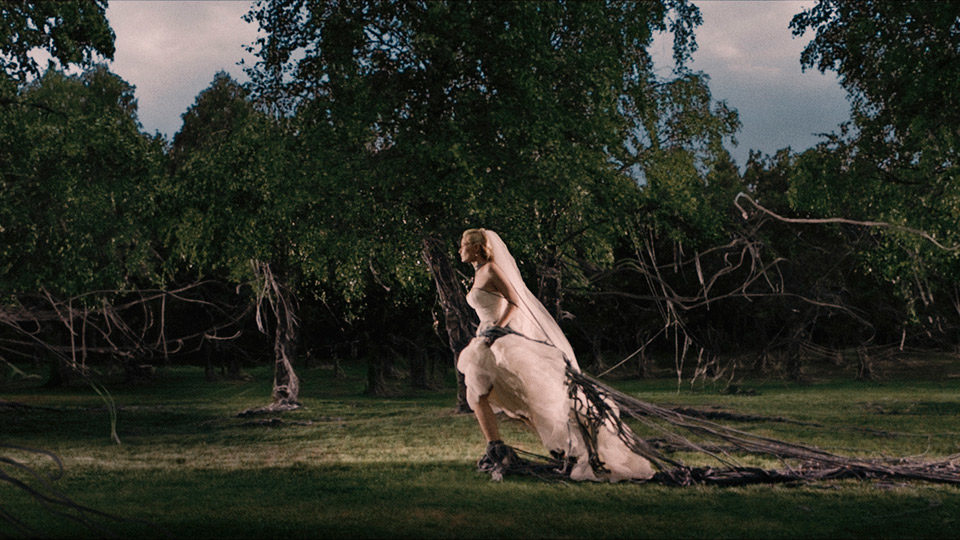
Melancholia
Savvy programming had Lars von Trier’s Melancholia screening for the press in the all-important 8:30 a.m. slot just two days after The Tree of Life. (We needed a day in between to recover.) Von Trier also juxtaposes a family psychodrama with a cosmological big bang—in this case the extinction of all life when an errant “flyby” planet penetrates the earth’s gravitational field and then, inevitably, its surface. Malick tries to pummel us into submission—more prayers, more music—with his vision of New Age Christian redemption, which in the end just made me depressed and annoyed. Von Trier, on the other hand, creates a blackly comic delirium that is terrifying and completely exhilarating. Melancholia is built on an ironic deployment of German Romanticism that both acknowledges and resists its allure and power. In a transcendently hilarious juxtaposition of music and image, von Trier scores the kiss of death—the planet slowly colliding with the earth—to the “Liebestod” (love-death) theme from Wagner’s Tristan and Isolde. Knowing an outrageous—and perfect—cinematic ploy when he sees one, von Trier opens and closes the movie with different versions of this “music video.”
Had von Trier not acted out at his now notorious press conference, his movie might have won the Palme. Certainly it has “size,” although, more precisely, it is scale, as a formal and expressive element of film language, that is the film’s structuring factor. Melancholia opens with an enormous close-up of Kirsten Dunst’s face, which is followed by an image of another almost frame-filling rounded shape—that of the implacable celestial body of the title, looming on the horizon of time and space as it does within the psyche of the movie’s manic-depressive protagonist. Dunst, who deservedly won the Palme for Best Actress, is extraordinary, as is the more mercurial Charlotte Gainsbourg, who plays her sister.
The only movie to rival the power of Melancholia was the smallest: Jafar Panahi and Mojtaba Mirtahmasb’s This Is Not a Film, shot on a cellphone and a modest DV camera and smuggled from Tehran to Paris on a USB flash drive hidden in a cake. The stakes involved in what is literally a “home video”—and what more amateurish and therefore disreputable genre of motion pictures could there be?—are enormous. In March 2011, on Iranian New Year’s Day, Panahi, under house arrest in his Tehran apartment while his sentence—six years in prison and a 20-year ban on making films—was being appealed, is irresistibly drawn to setting up his home video camera. For him, moviemaking is almost as essential as breathing, and so he decides to investigate the ontology of cinema in order to make a film that is not one. To assist him, he calls on Mirtahmasb, a friend who specializes in making-of documentaries to record the process of not making a film. The result is a great modernist (i.e. reflexive) movie and a portrait of an artist, creatively and without any self-pity, looking for a way to preserve his freedom simply to represent the world as he sees it.
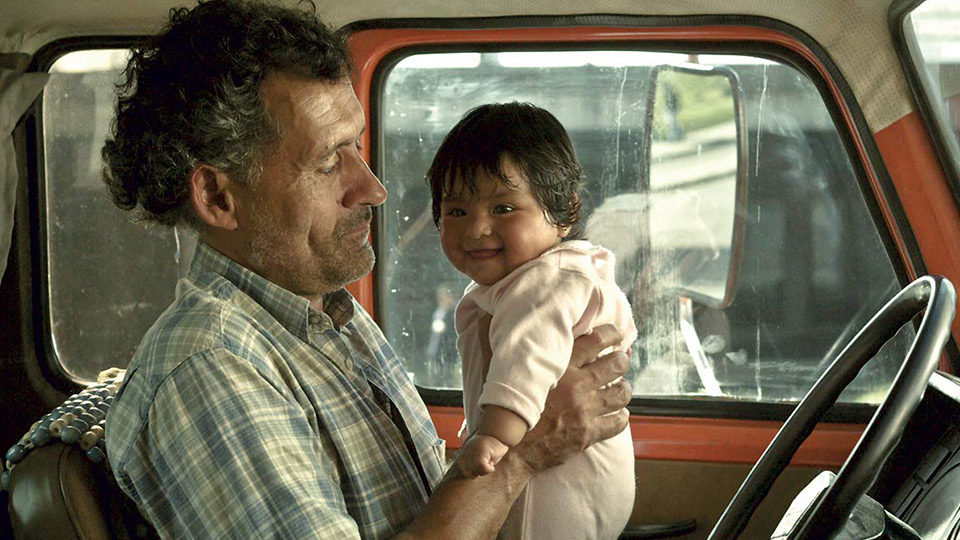
Las acacias
Despite taking place almost entirely within the confines of Panahi’s apartment and unfolding, until the final sequence, as a two-hander, This Is Not a Film is rich with incident: forbidden fireworks explode outside; the family’s giant pet iguana crawls compulsively across the floor and up and down the bookcases, much as Panahi must envision himself soon to be pacing in a prison cell. For a man condemned, even putting jam on his breakfast toast with the sunlight streaming onto the kitchen table is a remarkable moment. In contrast, I can barely remember a single incident in Pablo Giorgelli’s Las acacias, another small and amazingly rich movie, but its 85 minutes passed as if they were no time at all, and I immediately wanted to see it again, so much did it tap into the experience of being alive in the moment. A middle-aged Argentine truck driver (Germán de Silva) en route from Paraguay to Buenos Aires, carrying his usual haul of freshly cut timber, picks up a young Paraguayan woman (Hebe Duarte) and her 5-month-old baby. The baby is well-behaved but, nevertheless, a scene-stealer—incontrovertible truth on the screen. Somewhere in the course of the journey, there is a brief conversation about different Spanish dialects and somewhere further along we learn that the truck driver has been estranged from his wife and his adult son for many years. And although I cannot explain why or how, except by saying that de Silva is a great actor and Giorgelli a stunningly subtle director, we become aware that the truck driver has become profoundly attached to the young woman and her child, so much so that the prospect of his imminent separation from them is overwhelming. Las acacias won not only the Camera d’Or for best first feature but three of the independent jury awards, including my favorite, the Grand Rail d’Or, given by a group of ardent cinephile railway workers who attend the festival every year.
It was a breakthrough year for Latin American movies. In addition to Las acacias, there was another strong Argentine movie, Santiago Mitre’s The Student, a narrative of a callow but ruthless young man’s attempted rise to power, set within a complicated background of student unrest and political intrigue. (It had won a First Feature Award at the Buenos Aires International Film Festival but at Cannes screened only in the market.) From Brazil came Juliana Rojas and Marco Dutra’s Hard Labor, which combines an undercurrent of horror (or more specifically the uncanny) with a realistic depiction of economic collapse, small-business labor/management tension, and a crisis in male identity, particularly among those made redundant. And Mexican director Gerardo Naranjo’s Miss Bala, based on the true story of a beauty pageant winner who became a pawn in a battle between rival drug gangs, unsparingly depicts the horror of living in an unofficial war zone. Violent as Miss Bala is, it paled in comparison to Korean genre director Na Hong-jin’s The Yellow Sea, which is even more grim and bloody than his debut feature, The Chaser, and contains two of the most mindbogglingly choreographed, thrillingly extended pursuit scenes—one on foot and one in cars—that I’ve ever seen.
There were only a few effective antidotes to the apocalyptic violence that swept the festival. One was Las acacias; another, Aki Kaurismäki’s Le Havre; and a third, the Dardennes’ The Kid with a Bike. All three left their protagonists alive and with a chance of happiness at the end. Shot on 35mm, Le Havre and The Kid with a Bike were exquisite in their deployment of light and color. In the context of a festival dominated by digitally produced and projected movies, they seemed like a throwback to another century. Which in fact is what Le Havre is about.
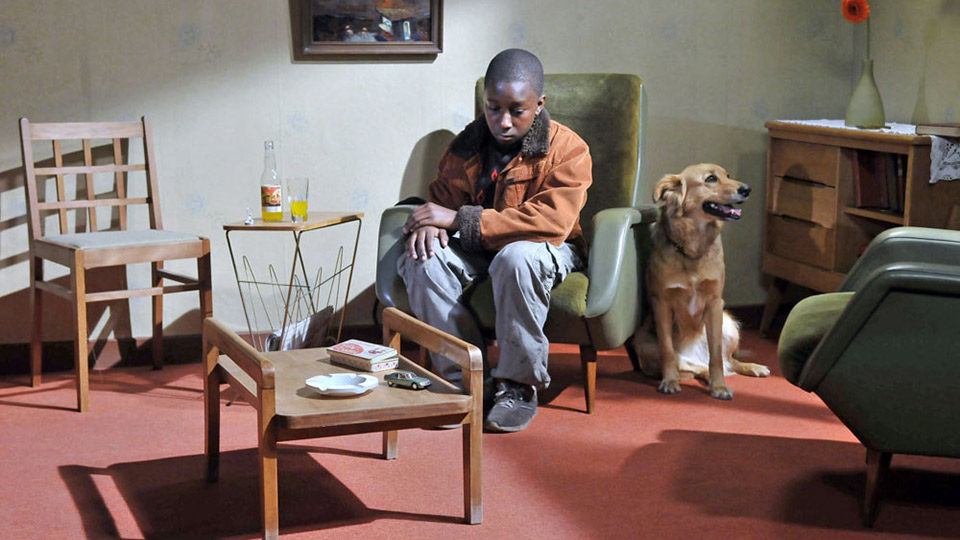
Le Havre (Aki Kaurismaki, 2011)
At his press conference, Kaurismäki explained that people often wished to have been born a decade or two earlier than they actually had been. Since his birth year is 1957, he wanted to be a child of the Forties, not to have lived through the war but to have experienced the Resistance. He also explained that since the condition of today’s world seems so hopeless, he has no desire to add to it by making a grim film. Le Havre, accordingly, is a utopian fairy tale in which a group of friends and acquaintances, hard workers living just above the poverty line in the Normandy port city of the title, band together to help an illegal African immigrant boy get to London, where his mother has already settled. Chief among them is Marcel Marx, once an artist who lived in Paris, perhaps the same Marcel Marx who was the central character in Kaurismäki’s 1991 La Vie de Bohème. Le Havre references classic Resistance movies from Army of Shadows to Casablanca, but it’s pure Kaurismäki, a graceful, deeply humanist work, and very tough despite its limpid beauty and an unexpected miracle at the end. The actors (André Wilms, Kati Outinen, Jean-Pierre Darroussin, and Blondin Miguel) all deserved prizes as did the director and the cinematographer (Timo Salminen). But there is no accounting for juries. Shut out of the festival’s official awards, Le Havre won the International Federation of Film Critics (FIPRESCI) prize for best film. Sometimes critics get things right.



